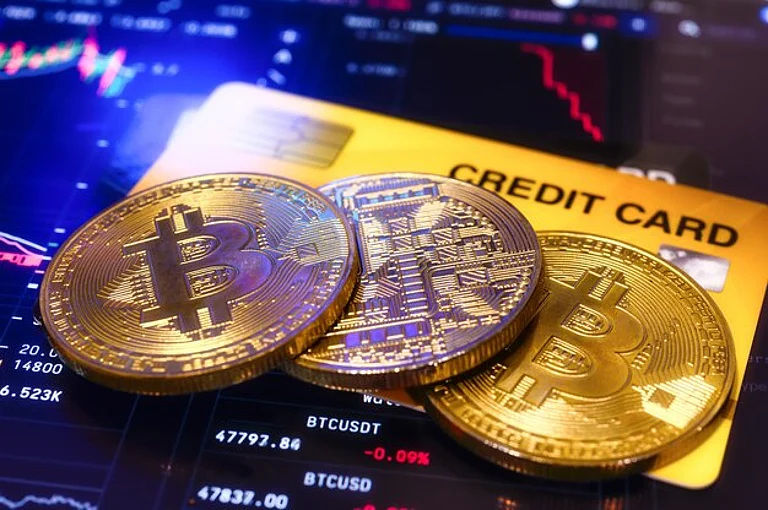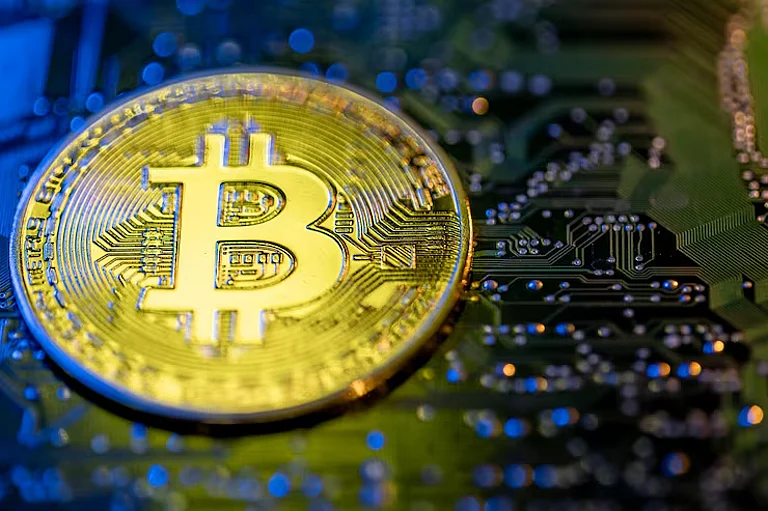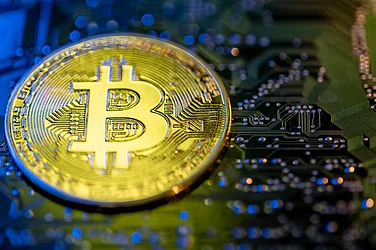In cryptocurrency, scams evolve as fast as technology itself. Among the most deceitful and rapidly proliferating is address poisoning. This is where an attacker manipulates your transaction history to intentionally send funds to the wrong wallet. Key words herein, such as address poisoning, crypto scam, wallet safety, will be relevant in their contribution to explaining one of the fastest-growing social engineering attacks in blockchain today.
Address poisoning is dangerous because it does not rely on sophisticated hacking; instead, it leverages human error to its advantage. Regular crypto users tend to fall prey to it, which makes awareness the biggest defense.
What is Address Poisoning?
Address poisoning is one of the methods in crypto scams when attackers fill your recent transaction list with a fake wallet address by sending a minuscule amount of tokens into your wallet. It therefore seems like their fake address is one with which you've dealt before. Later, when you copy an address from your history for a new transaction, you might accidentally choose that scammer's address.
Key features of address poisoning
It doesn't require hacking your wallet.
It relies on the incorrect address being inadvertently copied.
It works, because modern wallet addresses are complex and similar-looking.
It tampers with your transaction history, not your private keys.
How Address Poisoning Works: A Step-by-Step Breakdown
Address poisoning follows a very predictable pattern, whose danger lies in its simplicity.
1. Scammer generates fake wallet address
The scammer generates a wallet address that is very similar to your own or one you regularly transact with.
For instance,
Your real address: 0x82F3.19B0A
Fake address: 0x82F3.19B0E
2. They send a tiny "dust" transaction
The attacker sends a very small amount, often referred to as a dust transaction, to your wallet.
Could be as low as:
$0.00 worth of tokens
0.00000001 ETH
Even a token they themselves created
Their aim: to have their dummy address reflected in your transaction history.
3. Their address shows up in your wallet activity.
Many users drive their transfer decisions by their wallet's "Recent Transactions."
That is where the scammer takes advantage: their address now appears as
A past recipient
A relationship of trust.
A valid part of your wallet history
4. User copies the wrong address
In haste or distraction, the user copies an address from the history, thinking that it was correct, and accidentally chooses the scammer's address.
5. Fund Transfer to the Scammer's Wallet
Once the user has completed the transfer, it is final.
Crypto cannot be reversed.
Irrevocable loss of funds
That is why address poisoning works: it uses your own habits against you.
Why Poisoning Works So Well
1. Complex Wallet Addresses
Crypto addresses are long, random strings. Humans are not designed to remember or recognize patterns like:
0x7Da3B29f94A82c124e1b88F1D0cD3929A39Fbf9
This complexity makes it easy to mix up one address with another.
2. Humans Trust Patterns
We rely on visual patterns, not full details.
We consider an address correct if the first 4–6 and last 4–6 characters are familiar.
3. Wallet Interfaces Encourage Copy-Paste
Wallet applications indicate recent addresses, from which it is easy to copy.
Scammers know this and place their fake addresses right there.
4. No Reversal in Blockchain
Most victims realize the mistake only when the funds are gone.
Decentralization gives users control—but also responsibility.
Spot the Difference: Real vs. Fake Address (Why Users Fall for It)
One of the biggest reasons address poisoning scams work is because crypto addresses are long, confusing, and visually complex.
Scammers don’t try to rewrite the full address—they only modify a few characters while keeping the beginning and end identical.
Here’s a real-world style example to prove how easy it is to be fooled:
Example: Real vs. Fake Address
Type | Wallet Address |
Real Address | 0xA3f9c42B97F0a19b8D24C5E91F7A9e6b8b4E12A |
Fake Address | 0xA3f9c42B97F0a19b8D24C5E91F7A9e6b8b4E21A |
At first glance, both appear identical because scammers intentionally copy:
the starting characters (0xA3f9c42B97F0a19b8D24C5E9…)
the ending pattern
the same visual length
But notice the extremely subtle difference:
Real Address ends with: ...E12A
Fake Address ends with: ...E21A
Just two characters swapped — and the entire wallet changes.
Why it’s dangerous
Most users rely on copy–paste history, auto-suggestions, or quick visual checks.
Crypto interfaces often truncate the middle, showing only the first and last 5–6 characters.
Scammers exploit this by ensuring the fake address looks almost identical.
What this means for you
Even if you’re careful, a fake address can slip into your wallet history, clipboard, or recent transactions list.
This is why address poisoning is one of the highest-success social engineering attacks in crypto today.
How Address Poisoning Affects Different Types of Crypto Users
Address poisoning affects users differently depending on their experience, transaction patterns, and which platforms they rely on. While newbies tend to get conned due to a lack of knowledge, professional traders and Web3 developers also get affected due to habits and automation routines. Let's examine the effect on each of these user groups.
1. Beginners/First-Time Wallet Users
Because beginners are the easiest targets, usually:
They do not truly understand how the histories of transactions work.
They assume any incoming token is valid.
It is usually copied and pasted in haste without ever checking.
They treat wallet interfaces like banking apps.
Small mistakes, such as copying from “Recent activity” instead of a trusted list, make them vulnerable.
Wallets of beginners are targeted by scammers who monitor new addresses on the blockchain.
2. Frequent Traders and DeFi Users
Frequent traders are confident but run a very high risk due to their speedy decisions and use of shortcuts.
For example:
Copying the last interacted address
Sending tokens quickly during the price fluctuation.
Using multiple chains and addresses
Manage dozens of daily transactions.
The faster the market is moving, the less time they have to double-check the details. The attackers know this and create fake addresses that resemble either a legitimate DeFi contract or a previous trading partner.
3. NFT Collectors
Because marketplace interactions generate several transaction logs, NFT users rely a lot on wallet history. This actually makes it easy to mask fake entries between real ones.
An NFT user can accidentally:
Transfer an NFT to a fake marketplace address
Send money to a scammer, not to an actual buyer
Approve a fraudulent contract
Scammers also generate fake NFT tokens using similar names or collection symbols to further poison wallets.
4. Web3 Developers
The developers often deal with several test wallets or staging contracts. It's often pretty confusing to switch between them.
If a scammer sends dust transactions to the main wallet of a developer, then it becomes difficult to distinguish the real development addresses from the fake ones. This may lead to:
Wrong contract deployments Siphoned-off funds Loss of project assets
Types of Address Poisoning Attacks
Address poisoning does not have a single method; it has variations. Knowing about all the types helps avoid mistakes.
1. Insecticidal Dusting Poisoning
Attackers send tiny amounts of tokens called dust.
Goal: In the activity logs, insert fake addresses.
Scammers send a token with
A familiar name
A famous logo
Similar contract details
This tricks the users into believing they had interacted with that token previously.
3. Zero-Value Transfers
Blockchain allows sending transactions with zero value.
These show up in your wallet history, but no funds actually move.
It's an easy way for scammers to "poison" your transaction list for free.
The scammer creates
Same first few characters
Same last few characters
Slightly changed middle section
Users fall for this easily, because wallets usually display only the first and last few characters:
Signs Your Wallet Has Been Poisoned
Look for these red flags:
1. Unknown Small Transactions
If you see:
Very small amounts
Tokens you didn’t buy
Transactions from unknown senders,it could be poisoning.
2. Strange Tokens With Odd Names
Lying tokens can have:
misspelled names
Weird logos
Artificially high supply figures
3. Transaction history filled with zero-value transfers
Many scammers send millions of zero-value "transactions" to poison wallets at scale.
4. Addresses That Look “Too Similar”
If two addresses seem to be nearly identical, beware: scam artists love patterns.
Why Poisoning Is on the Increase So Rapidly
Address poisoning has grown over the last two years. The reasons are several:
1. More Crypto Users
When millions join crypto every year, scammers exploit newcomers.
2. Lack of Awareness
Most people know phishing—but not address poisoning.
3. Inexpensive to Perform
Tiny or zero-value transactions cost nearly nothing.
4. Wallet applications still show full transaction history.
Not all wallets filter or block suspicious transactions yet.
5. Blockchain Transparency
Since all addresses are public, scammers can scan large lists to target users at scale.
Real-World Examples (Explained Simply)
Example 1: The Busy Trader
A trader transfers several times a day.
One day, he copies an address from his history without checking if it's correct.
The fake address of the scammer was placed there the previous night.
He transfers 3 ETH to the attacker.
Example 2: The NFT Collector
An NFT collector receives a zero-value transaction with a similar past buyer's address.
When she tries to send her next NFT, she inadvertently selects the poisoned address.
The NFT is lost forever.
Example 3: The New Crypto User
The beginner would assume any token showing up in his wallet was valid.
He interacts with a poisoned token that invokes a malicious smart contract.
The contract empties his wallet.
How to Protect Yourself from Address Poisoning
Here are the most effective ways of keeping your crypto wallet secure:
1. Always Verify Full Address
Before sending:
Check the first 6 characters
Check the last 6 characters
Never depend exclusively on the middle pattern
Verify from several sources before sending, even to someone you know.
Instead of just copying from history,
Save frequently used addresses
Label them
Store them safely.
3. Avoid Address Copying from Transaction History
This habit is what mainly causes people to fall into poisoning attacks.
Better options:
Copy address from your saved contacts
Copy directly from intended receiver
Use QR codes where available
4. Utilize Wallets That Have Anti-Poisoning Features
Some modern wallets:
Filter suspicious transactions
Warn about zero-value transfers
Hide dust tokens
Use wallets that have these safety tools.
5. Ignore Unknown Tokens
Never interface with:
Random NFTs
Unknown tokens
Tokens with weird names
Most of them are directed toward sending you to fake websites.
6. Double-Check Before Confirming Transactions
Take 3–5 seconds to confirm details:
Amount
Receiver address
Many scams succeed simply because of hastiness.
7. Use Hardware Wallets
Hardware wallets provide additional layers of verification:
Display complete address on screen
Require manual confirmation
Reduce the possibility of copying wrong addresses.
8. Avoid using public Wi-Fi when transacting.
An attacker can modify and view clipboard data across insecure networks.
Best Practices for Crypto Users
Do not store addresses in arbitrary text file
Bookmark key addresses within secure applications
Never interact with "airdropped" tokens.
Avoid clicking suspicious notifications originating from wallet apps.
Behavioral Habits to Change
Stop using your transaction history as a shortcut
Stop depending solely on the first and last several characters
Don't rush big deals.
Cross-verify with the recipient on another platform.
How Wallets and Exchanges Are Fighting Address Poisoning
Crypto firms introduce fresh controls.
1. Warning Labels on Suspicious Transfers
Wallets underline small/zero-value transactions.
2. Filtering Fake Tokens
New updates hide "scam tokens" by default.
3. Improved Address Representation
Some wallets show more characters or colour-coded addresses.
4. Machine Learning Filters
Systems find fake patterns and flag them.
5. Protect Address Books
Users can save trusted addresses so they don't have to check history manually.
While such features may be helpful, the strongest shield will be human awareness.
Impact of Address Poisoning on the Blockchain Ecosystem
1. Loss of User Funds
Wallet-based scams account for billions stolen every year.
2. Loss of Trust in Crypto
Early Loss of funds scares away new users.
3. Increasing demand for security tools
Antiscam software, secure wallets, and also monitoring tools are in rapid development.
4. Pressure on Developers
Now, wallet developers have to use better UI design so that users don't accidentally select fake addresses.
FAQs About Address Poisoning
1. Is address poisoning a hack?
No, your wallet is not hacked. It is a form of social engineering that plays your behavior against you.
2. Can scammers directly steal my funds?
Not by poisoning alone, that is. They will only succeed if you have mistakenly sent funds to the wrong address.
3. Why do scammers send dust or zero-value transactions?
So that their fake address would be in your history and you see it as a “recent” transaction.
4. Can I recover my funds if I send them to a poisoned address?
No, blockchain transfers are irreversible.
5. How can I avoid being poisoned?
Use an address book Double-check addresses Avoid copying from transaction history. Ignore unknown tokens
Conclusion
Address poisoning is probably one of the easiest and most efficient scams within the crypto ecosystem. It doesn't use hacking skills or even advanced malware, but only manipulates your wallet's transaction history. You can protect your assets quite easily by learning how it works and watching for signs while developing safer transaction habits. Crypto gives freedom and ownership, but with that freedom comes responsibility. Double-checking addresses, avoiding unknown tokens, and the use of secure tools can avoid costly mistakes.

























